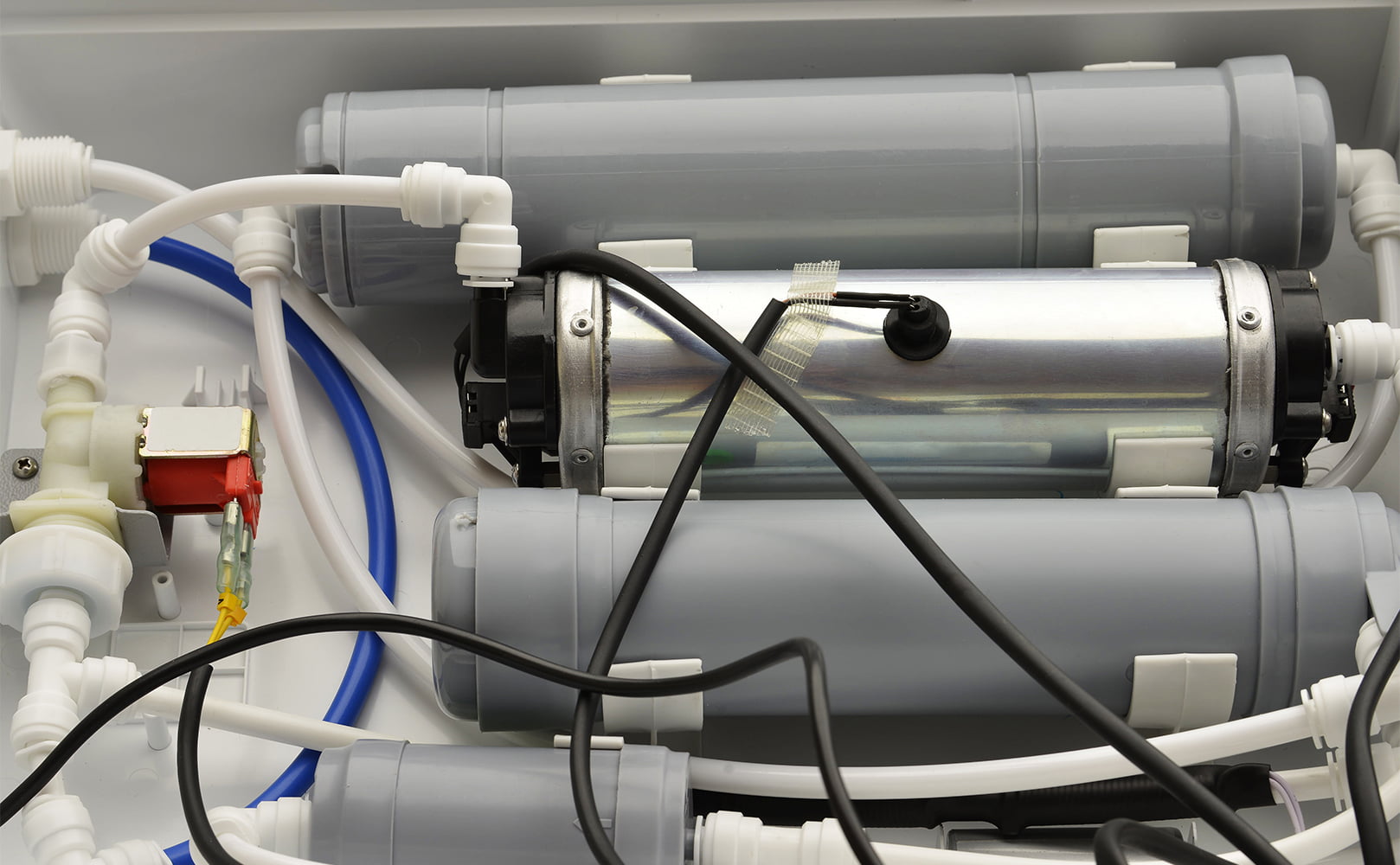UV Water Filter Side Effects – What You Need to Know
Written by: Alexandra Uta // Last Updated: Dec 14, 2022
This page may contain affiliate links. If you buy a product or service through such a link we earn a commission at no extra cost to you. Learn more.
Wondering what side effects to expect when using a UV water purifier?
The good news is that you can look forward to only positive ones, like reducing your exposure to harmful waterborne pathogens that are capable of spreading disease.
There are, however, some cases where you could experience issues if your water source doesn’t allow the purifier to function properly. Read on to find out what those are.
Key Takeaways
- There are no known negative side effects from using a UV water purifier or drinking UV-treated water.
- A UV water purifier may not be effective if the conditions it is used in are not optimal. If the source water is not clean, then the purifier may not work properly and the water may not be sanitized.
Side Effects of UV Water Purifiers
There is no scientific evidence whatsoever that indicates that a UV water purifier may have negative side effects.
- The UV-C light that is used by the lamp to kill microorganisms is not able to be transferred into drinking water for us to ingest.
- Exposure to the skin and eyes from UV rays could be considered dangerous, but the UV lamp in a purifier is encased in a chamber and cannot be looked at while it is on.
In fact, the only side effect may be that your water stops making you sick. UV water purifiers emit beams of light as the water passes through the unit, which target the DNA in the cells of pathogens. This causes the cell to not be able to replicate, essentially rendering it ineffective and incapable of causing disease.
This works on bacteria, viruses, algae, spores, mold, and cysts, destroying microorganisms you may not even know are there.
Water Conditions – When Are UV Purifiers Not Safe?
The only time a UV water purifier or UV treated water may have negative side effects is with improper handling or improper pre-filtration. This has nothing to do with the process itself but is due to the water conditions or something else.
If the water is too murky, it can create shadows that the microorganisms can hide behind, and the UV light might miss them. So make sure to check your water for levels within the following ranges:
- Water hardness lower than 7 gpg (grains per gallon)
- Iron lower than 0.3 ppm (parts per million)
- Tannins lower than 0.1 ppm
- Manganese lower than 0.05 ppm
- Turbidity levels lower than 1 NTU (nephelometric turbidity unit)
Besides, if the UV lamp is not replaced yearly, its effectiveness will drop, and it may not be able to kill all pathogens.
In addition, if there is a cut in the electricity, the unit will stop sanitizing the water until the power comes back on.
Side Effects of UV-Treated Water
The side effects of UV-treated water are less illness or disease. In all seriousness though, there are no negative side effects known for drinking UV-purified water, unless as previously mentioned, there are already issues with the disinfection system or the source water.
Other Water Contaminants
Contaminants that your UV water purifier will not treat include chlorine and chloramine, heavy metals, forever chemicals also known as PFAS, pesticides, and more.
It is recommended that you have your water professionally tested to figure out which water filtration system is best for you to eliminate these.
The Pros and Cons of Using Ultraviolet Light Water Treatment
Pros
- Extremely effective, killing 99.9999% of contaminants in the water.
- Does not use chemicals for disinfection, and therefore does not alter water smell or taste, or leave residue.
- Energy-efficient, cost-efficient, and eco-friendly. The UV bulb uses around as much electricity as a household bulb, so the spend on electricity is minimal. The unit does not require any expensive maintenance and does not produce any waste.
- A simple mechanism minimizes the need for long-term maintenance and reduces the risk of breakdown.
- Won’t damage your household pipes with chemical residue.
- Works immediately to disinfect your water supply as the tap is running.
- Its compact design takes up very little space.
- Tested extensively and FDA approved.
Cons
- Does not remove anything from the water. Kills pathogens, and that is all.
- Does not improve the appearance, smell, or taste of the water.
- Needs a constant flow of electricity to function. Power cuts will cause the lamp to stop working, and the water to immediately stop being disinfected.
- May require pre-filters, as the water needs to be clean before it can be effectively sanitized.
- Does not work well with hard water, as this can cause the quartz glass sleeve to need to be replaced more often.
- The lamp can sometimes cause the water to come out a little warm.
- Reliance on alarms and regular maintenance to make sure it is working properly. A visual inspection to see if the lamp is working properly cannot be performed.
If you have any questions about UV water filter side effects please don’t hesitate to leave a comment below!
Information provided on BOS is for educational purposes only. The products and services we review may not be right for your individual circumstances.
We adhere to strict editorial guidelines. Rest assured, the opinions expressed have not been provided, reviewed, or otherwise endorsed by our partners – they are unbiased, independent, and the author’s alone. Our licensed experts fact-check all content for accuracy. It is accurate as of the date posted and to the best of our knowledge.


